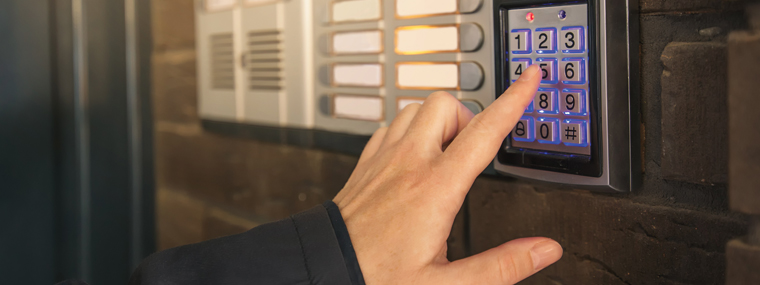
Securing Your Community Against Workplace Violence
How To Handle Disgruntled Employees or Upset Residents
By Brie Peterson / Published August 2017
Preparation for workplace violence at a community should not be overlooked. Although it is a concern that can hopefully be avoided, there are precautionary measures that can help prevent violence, as well as systems that can assist in handling upset employees, terminated workers, or angry residents. These can all help keep the community safer.
First, when hiring on-site employees, the community or property manager should consider having background checks and drug screenings completed for the potential workers. These can alert the community to any previous problems or concerns. While in the office or on community property, have open conversations about community and company policies. Also, have a reporting method in place that all community employees are aware of in case someone acts suspiciously or behaves violently.
If the community does not already have technology in place to help manage and monitor the property, there are many systems to be considered. These security options can help control the users of an area and verify individuals entering and exiting the community, as well as oversee certain buildings or amenities.
One common solution is access control. Access control systems only grant entrance to an area to people with proper credentials. This allows the community to manage which employees and residents have admittance. It also gives community officials access to records which provide information on who is entering an area.
For more secure management of an access control system, a security service provider can regulate the database of approved users. If a resident leaves or an employee is terminated, the service provider can immediately deactivate the credential. If there are concerns about the impending
termination of an employee, certain systems allow you to preschedule the termination process. This lets the community select a date and time for when a credential will be restricted and access removed. If a community manager is worried that pre-scheduling restricted access control is not enough, talk to local police about escort options to remove a disgruntled person from the community.
An access control database should be consistently managed and updated as residents and employees come and go. If the database has not been updated, an overhaul of the system may be needed to ensure that only verified users have the proper credentials. If the database is not updated and old credentials are still in use, the community is left open with security gaps. Another method to reduce workplace violence is to eliminate or reduce on-site personnel. There are several places in a community that can be monitored remotely. When using a virtual guard, a community is limiting human interactions with a method that cannot be intimidated or hurt.
Virtual guards can replace on-site gate attendants by verifying visitors through a kiosk. Some also give the options of verifying drivers by a driver’s license or through license plate recognition. For instance, when a driver arrives at the gate, the guest inserts his or her driver’s license into a kiosk or an image of the vehicle’s license plate is captured. If the driver’s license or license plate is verified and approved, the gate will open. If not, the driver will speak with a guard working in a remote location. The guard will verify with the resident whom the visitor would like to see, and then allow or deny entry as necessary.
A virtual guard can also monitor amenity areas for trespassers. With an active video surveillance system, video analytics can alert a virtual guard if someone enters an area that is closed. With two-way audio, the guard can respond and ask the trespasser to leave.
Using a virtual guard at a gate or amenity reduces the need for human interaction without losing security or verification of visitors. Not only is physical human interaction reduced, but a virtual guard system is likely more cost-effective for a community than on-site guards. Plus, when a situation cannot be handled remotely, a virtual guard company will have methods in place for directly contacting local authorities.
If a community chooses to use on-site patrols, make sure it is through a certified company. Accredited patrols should have policies and training for handling violent situations. If on-site patrols or a virtual guard system are not used by the community, a property representative should plan for when to contact the local police. A violent or suspicious situation is best handled by trained officials.
Document everything. In the event there is a problem, it is important to have a record of the instance. Video surveillance is very helpful, and some security services will manage the surveillance as well as provide the video for the community. This ensures that the community has proof of the incident for legal purposes. It also assists law enforcement if an investigation needs to take place.
When using video surveillance around a community, it is important to regularly inspect that the cameras are working and recording properly. Not only does this ensure that the technology is working, it also checks that nothing has moved to block the view of the cameras. Some security providers will include camera assessments as part of their services.
Once a community has security systems in place, the technology and overall systems must be frequently evaluated and serviced. An evaluation will review that the technology is up-to-date and functioning correctly. As that technology gets older, it will need to be serviced or replaced with modernized parts. Regular assessments of community security systems are critical in ensuring that a community stays prepared to prevent and handle an upset employee or resident.
Preparation is of utmost importance for preventing workplace violence. If an access control system, visitor verification process, or video surveillance is not already in place, a security provider can advise the community on programs and methods that are best equipped to thwart an incident. When speaking with a security provider or evaluating a current system, make sure there is an overall security plan. A complete plan should prevent or delay a situation, and it should detect a person or intrusion. The plan should also include a method of response as well as provide evidence if something does happen. Addressing those four steps will help a community be prepared and stay prepared.
Brie Peterson
Business Development Consultant For Envera Systems
Brie Peterson is the Business Development Consultant for Envera Systems. She works closely with the sales and marketing departments to provide best-in-class service to the communities that Envera works with. Envera Systems specializes in security technology systems with remote guards to replace or enhance guards at communities. Contact info: (855) 380-1274 or www.EnveraSystems.com.



